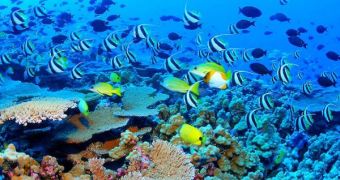Naturalists have known for a long time that different types of environments play a crucial part in the development of new species, as well as in the extinction of new ones. However, thus far, no one has been able to prove the contrary. Following a rigorous series of scientific experiments, experts from the University of British Colombia have managed to prove just that, when investigators from the Biodiversity Research Center have created mini-ecosystems in large water tanks and have studied the interactions that have been obvious between the species living there.
The small, self-contained ecosystems have been then populated with several species of three-spine stickleback fish, and, much to the amazement of those watching the tanks, changes have started appearing within them, in as little as 11 days.
What's even more interesting is that the experts have discovered an unusual ability that some of the stickleback species have, namely that of “engineering” their habitat to suit their needs. In some tanks, the amount of light that has penetrated the water to reach the fish has been drastically limited, when the animals have begun to release very large molecules of dissolved organic carbon, as well as bits of decaying plants and animals.
“Simply by what they eat and how they live, even young species that have 'recently' diversified can have a major impact on their food web. This study adds to a broader body of literature showing that species diversity matters in important ways,” Luke Harmon, the expert who conducted this research while being a postdoctoral fellow at UBC, explains. He is also the main author of a paper detailing the finds, published yesterday in the Advanced Online Publication of the scientific journal Nature. Currently, Harmon is an assistant professor within the faculty at the University of Idaho.
“Our study shows that through evolution, sticklebacks can engineer the light environment of their own ecosystems. It also demonstrates how speciation of a predator might alter the evolutionary course of other organisms in the food web,” former UBC post-doctoral fellow Blake Matthews, who is now a researcher at the Swiss Federal Institute of Aquatic Science and Technology Eawag, adds. He is also a co-author of the Nature paper.
“As new species arise from a common ancestor and evolve new ways of exploiting the environment, each inadvertently reshapes the dynamics of the ecosystem around it. We are just beginning to understand how,” study co-author Dolph Schluter, who is also a professor at the University of British Columbia, concludes.

 14 DAY TRIAL //
14 DAY TRIAL //